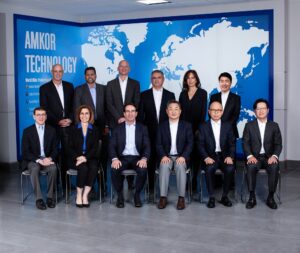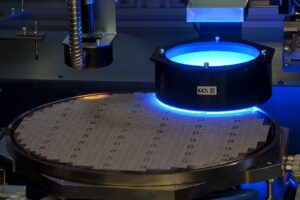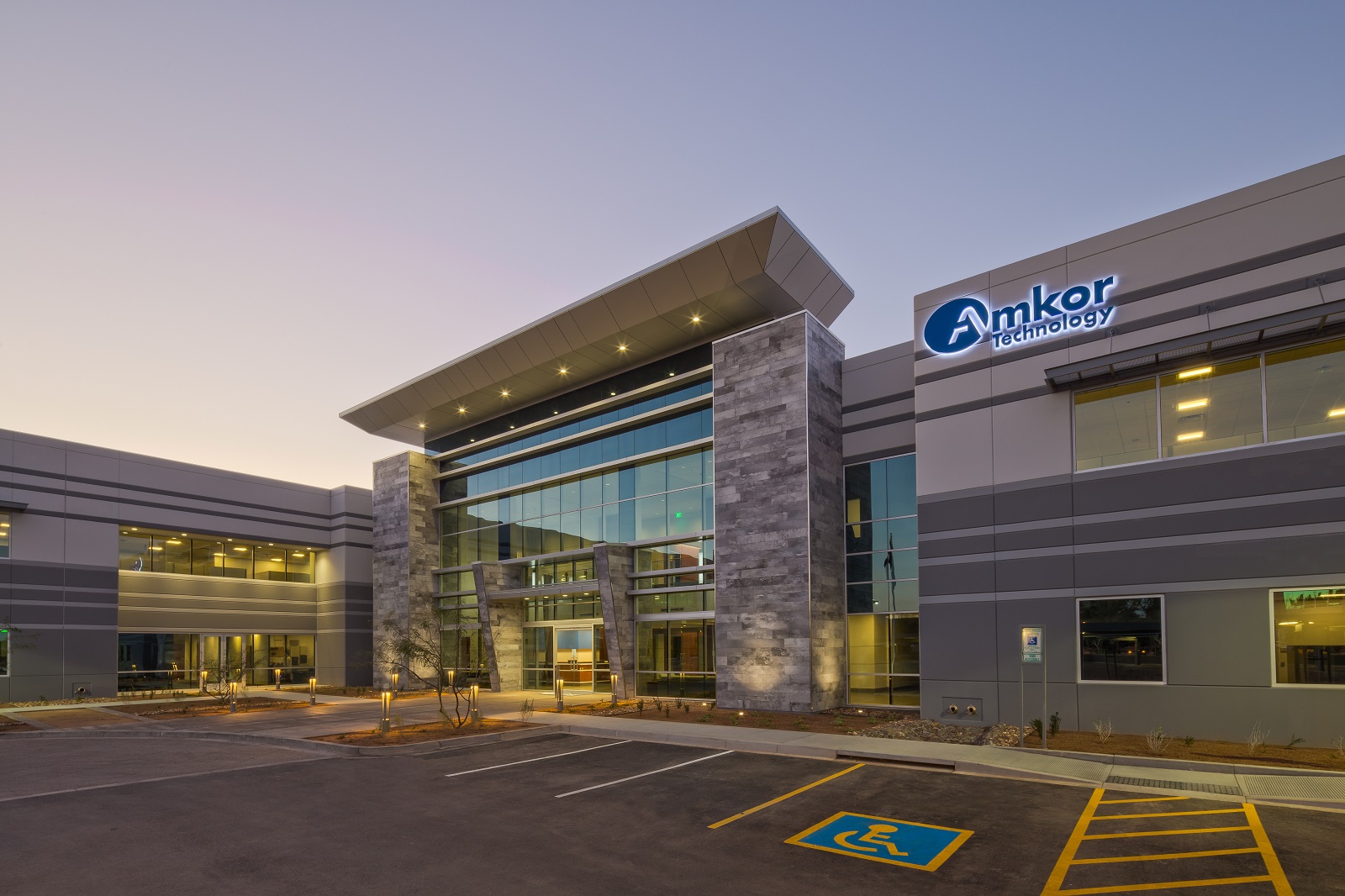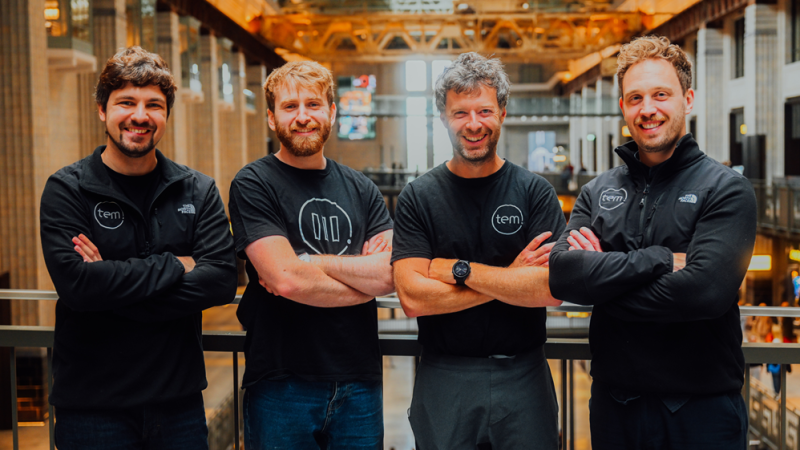It has been an eventful few years for Amkor Technology with pandemics, supply chain issues, and wars breaking out, but one of the quieter but more persistent challenges affecting businesses across the board has been the shortage of semiconductors. As we go through the energy transition and digital revolution, they are vital.
“Semiconductors are the building blocks of the modern digital society,” says Kevin Engel, Executive Vice President of Amkor Technology. “Recently they have been called the new oil of our society, fuelling transportation, e-commerce and much more.”
The critical role of semiconductors has not been widely understood – Engel points out that even his own friends and family did not appreciate how important they were even a few years ago. But as geopolitical tensions and supply chain problems persist, the public is becoming aware of how much we depend upon them.
“Amkor plays an essential role in bringing semiconductor devices to consumers. We are an OSAT, an Outsourced Semiconductor Assembly and Testing partner to the world’s leading technology companies,” Engel says.
 Amkor is a Tier One manufacturing service provider helping companies bring their products to market through OSAT services, from its headquarters in Tempe, Arizona and across a broad and diverse geographical footprint. Its services include integrated circuit package design, assembly, and testing, taking silicon wafers and dies and turning them into different types of chips, using technology ranging from legacy wirebond to chips using the most advanced new technology.
Amkor is a Tier One manufacturing service provider helping companies bring their products to market through OSAT services, from its headquarters in Tempe, Arizona and across a broad and diverse geographical footprint. Its services include integrated circuit package design, assembly, and testing, taking silicon wafers and dies and turning them into different types of chips, using technology ranging from legacy wirebond to chips using the most advanced new technology.
“We offer technology solutions including leadframe packaging, micro-electric mechanical systems, as well as more advanced packaging including System in Package, and high-density fan-out,” Engel says. “The mobile communications market is our largest end market, but we also serve the consumer, automotive & industrial, and computing sectors.”
Leading the Sector
Amkor is viewed as a technology leader, supporting the innovation of advanced semiconductors that drive faster processing, transference of data, increased reliability and power efficiency. This is something that can be achieved through a number of routes.
“In the past, the newest devices would leverage the most leading-edge silicon node to achieve performance improvements. Wafers and die have become more expensive, so the industry is now looking at packaging alternatives to achieve performance enhancements,” Engel explains. “Via a multitude of different packaging technologies, we can provide cost-effective solutions to continue these performance improvements, with faster processors for car entertainment systems, the ability to seamlessly transfer data to and from our cell phones or make laptop batteries last longer. We are proud to partner with our customers to bring these products to market while delivering high quality, high yield manufacturing.”
Yield, quality, and expertise are essential attributes Amkor’s customers require, but as Engel points out, it is not enough to simply have a grasp of the technologies.
“Key technologies are table stakes. Being a reliable, innovative partner and offering services for our customers where and when they want it is our differentiator,” Engel insists. “That is why we are expanding in Vietnam, Europe, and Japan to support the regionalisation of supply chains. Our selling points are technology, location, and quality.”
Diverse Sourcing
The current shortage in semiconductor materials has certainly brought the industry under more scrutiny than ever before, but it is far from the first challenge Amkor has faced in its 54-year history.
“We have seen many semiconductor cycles and market dynamics since it was founded in 1968,” Engel says. “Over the last 54 years, we have seen acts of nature, earthquakes, and the pandemic, all of which brought unique challenges to the table.”
Amkor’s response is a straightforward one. It plays a pivotal role in the supply chain of its customers, so Amkor avoids putting all its eggs in one basket.
“We source from many companies, striving to have multiple sources for each material. If a disaster shuts down any factory it can cause major disruption,” Engel points out. “Our whole industry was affected by significant supply chain issues during the pandemic.”
“Even with the entire industry’s efforts, many customers had shortages. Shipments of complex products were delayed by one missing part,” Engel says. “By working with a collaborative mindset, we have created powerful relationships throughout the supply chain.”
Of course, semiconductors are not the only resource Amkor depends upon.
“Human resources are the most important resource for Amkor. We value high calibre employees who understand the impact they make on our company,” says Engel. “We try to provide them with personal growth opportunities and a dynamic work environment. It is critical for the quality and yield of our services, to empower our people with a culture of trust and reliability, built into all parts of the company.”
Engel has a deep understanding of how important that is, having started at the company as a process engineer, and worked up to his current position over 20 years.
A Growing Footprint
While Amkor Technology has over half a century of history behind it, it is still seeing a time of unprecedented change in the industry, and it is changing to reflect that. The company has the largest geographical footprint of any OSAT, with a presence in seven countries including Korea, Malaysia, Taiwan, and Portugal.
“We are expanding in a new country and building a state-of-the-art facility in Vietnam. This new geography will offer customers more options to mitigate risk and strengthen supply chain resiliency. We are also considering opportunities to expand in the US, fuelled by the passage of the Chips act,” Engel says. “Our facilities in Europe are also expanding. We recently highlighted how our manufacturing facility in Portugal positions us well to partner with European semiconductor companies aiming to bring their supply chain closer to home. As the only Tier 1 OSAT providing advanced packaging technology services on the continent, we are seeing quite a bit of interest in our Portugal facility.”
This trend towards localization in Europe is not unique. Many regions are looking to onshore the production of precious semiconductors.
“Production capacity will continue to grow in the US over the next five to ten years. Those products need to be packaged somewhere, why not the US?” Engel points out. “It’s an exciting time in the industry with these localization trends going on.”
With its wide footprint, Amkor is perfectly positioned to take advantage of localization trends.
“Amkor is growing profitably. It is an exciting company to be in right now. There are always risks, but we are well positioned for continued success as a market leader with a broad geographical footprint to support the dynamic supply chain and regionalisation trends,” Engel enthuses. “We are committed to being part of an exciting future, driving our industry forward.”
Of course, while this trend is exciting, the semiconductor shortage is still ongoing. But Engel is optimistic about how that will go.
“It will migrate over time. When the pandemic hit, the automotive market quickly reduced its forecast, opening capacity throughout the supply chain. The PC market came in and consumed all that capacity,” Engel explains. “Then when automotive tried to come back in, there was no capacity left for the industry. Significant shortages were seen in silicon, components, and substrates. The market is starting to rebalance now with additional capacity throughout the industry coming online.”
Engel is taking a long-term view of Amkor Technology’s prospects and strategy.
“I teach my kids to visualise their sport to prepare their body for the outcome they want,” Engel says. “Vision is key to the future. It’s not what you can see, it’s what’s around the corner. At Amkor, I have a vision of exciting growth opportunities as the digital transformation continues. Our services are becoming increasingly integral. My generation has seen radical changes in how electronics affect our daily lives. I am excited to see how my son’s and daughter’s generation will look back and say, ‘I remember when you had to drive a car.’”






